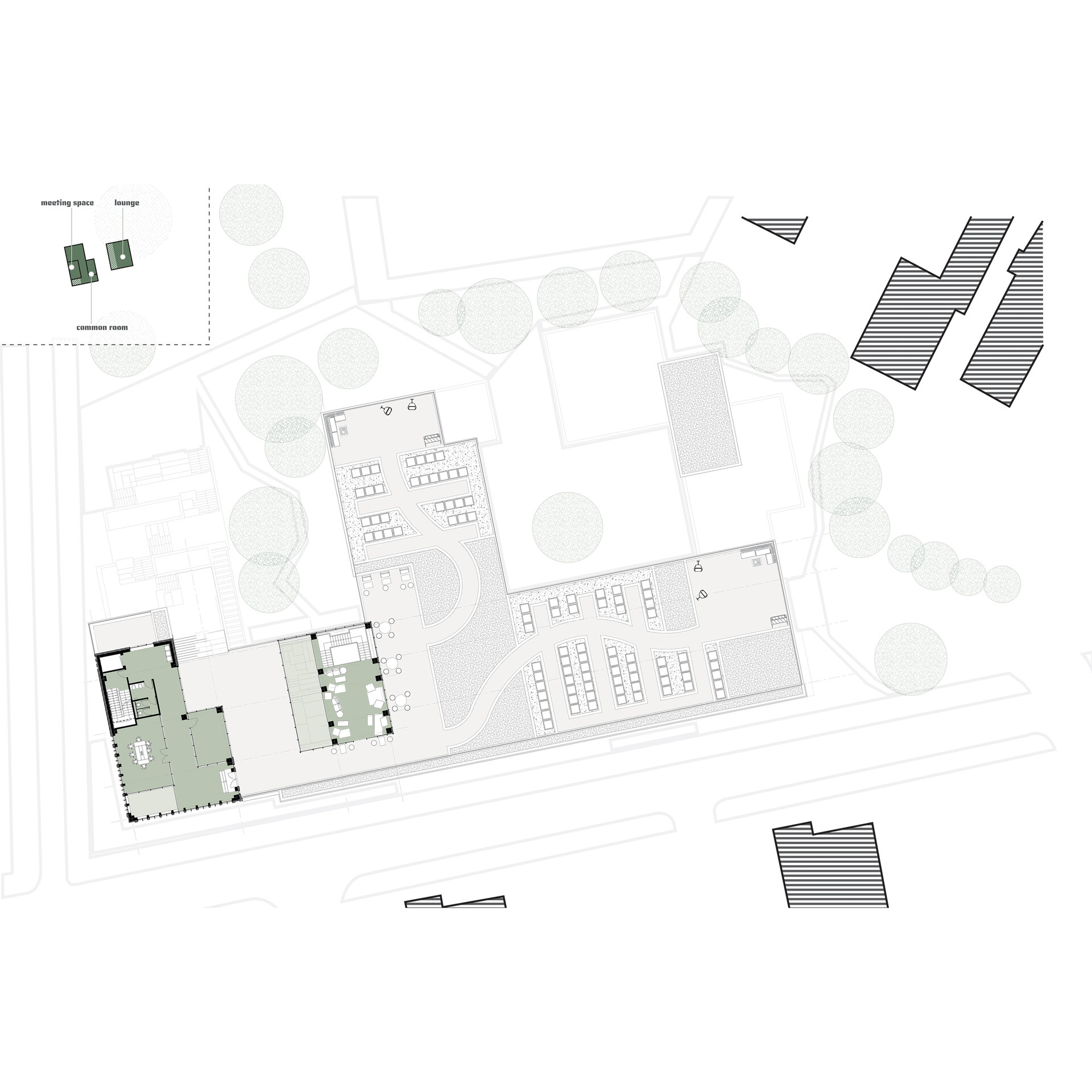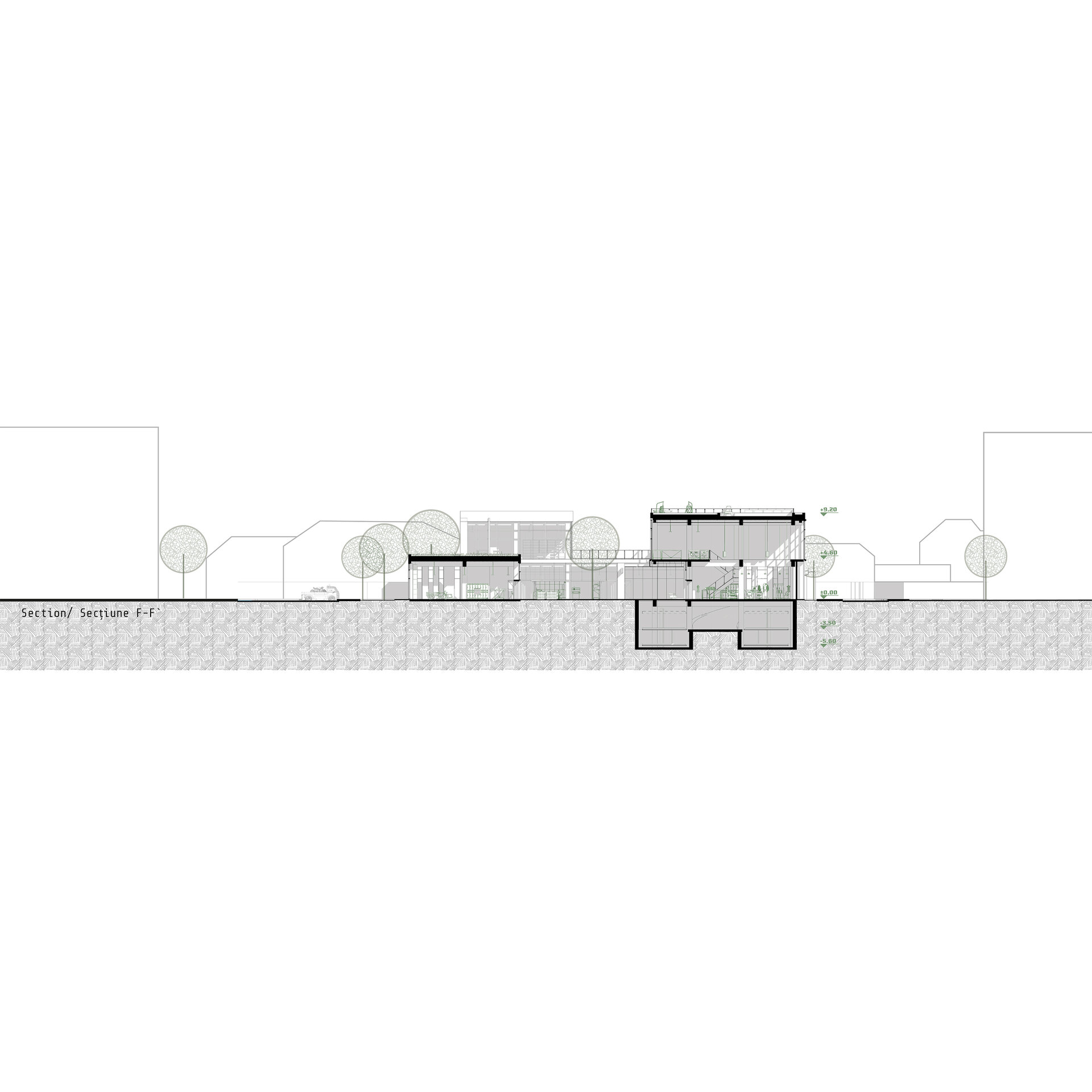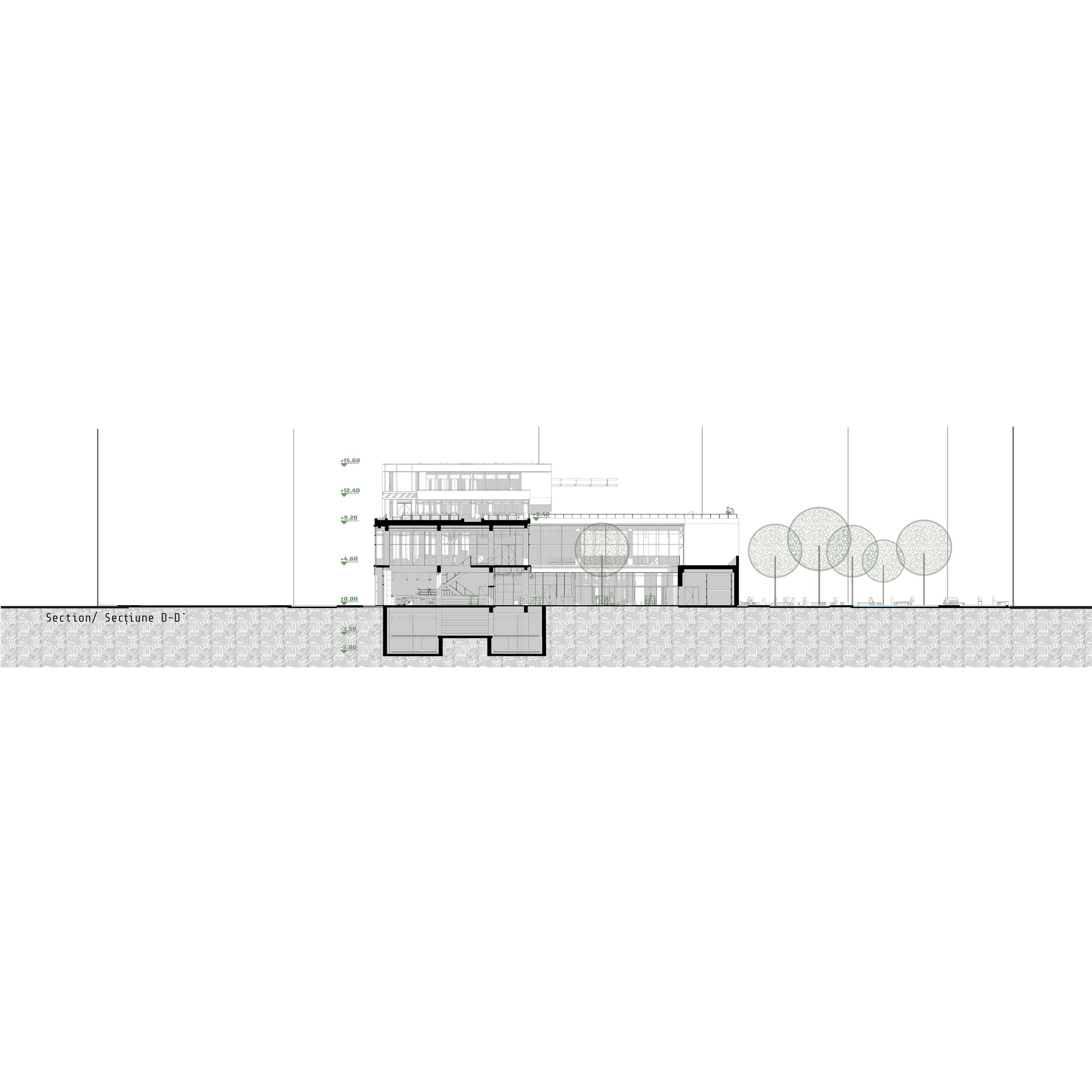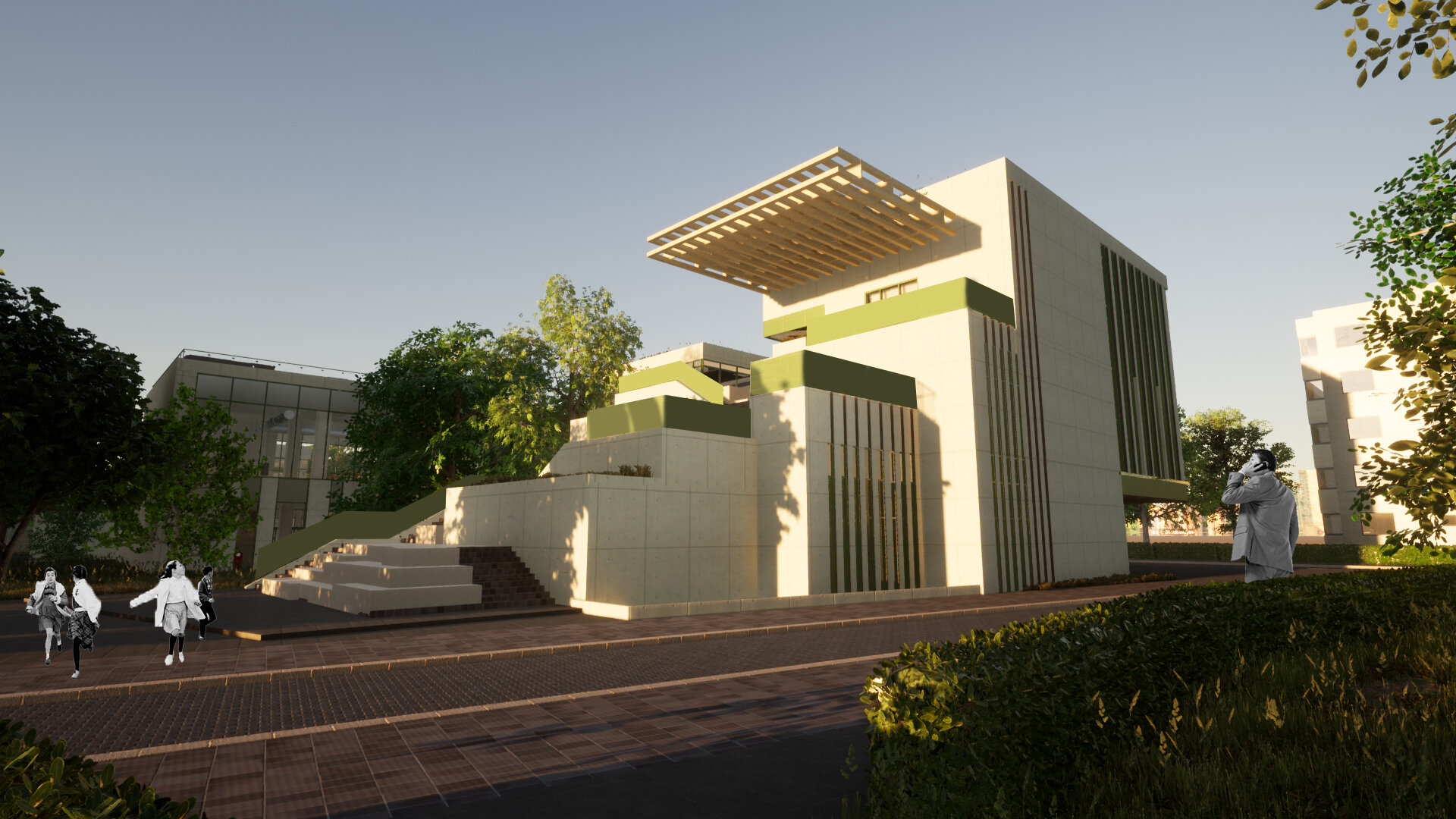
Crheator Manufacturing Community Center
Authors’ Comment
In the context of the continuous and accelerated development of Bucharest, the lack of common public spaces is felt more and more strongly, the diminution of the feeling of belonging to a community being also a result of the urban space lacking an identity that has the capacity of representativeness. To these aspects can be added the difficulty and consequently the lack of interest in those activities and aspects that can change the perspective created by the daily routine and resignation as a result of compromises in dialogue with the city and the processes of daily life.
The city dweller does not feel involved and does not seek solutions in solving various problems that indirectly concern him and his neighbors, without making him aware of the potential for gain from the direction taken to the environment in which he lives.
The opportunity to model the urban space according to the real needs and the specifics of those who live and use it can bring back the identity aspect in the current uniformed framework of the city and the neighborhoods. With a correct organization and the involvement of community members for the purpose of a directed development that can benefit everyone and that has the value of self-realization, which comes in strengthening the importance offered by the inhabitants, the environment in which they live and work.
This can improve some of the problems of public space at the local level and later can bring influences including the neighborhood and the city.
Also, the environments in which everyone can express themselves creatively are largely inaccessible due to the weak spread of the concept of maker as a hobby in urban areas, limited contexts and relatively high costs and knowledge required to practice this type of activity.
In addition to the practical aspects of this type of activity, it has a large share as a means of inter-relationship and development of both the capacity for self-support and finding variants in different contexts and problems, as well as social, communication or even empathic.
The Titan neighborhood, especially the eastern part, is an area suitable for the proposed center due to its position between the area adjacent to the central ring of Bucharest and the areas of new complexes built towards the city limits, more precisely between the area of main interest and accelerated development. in terms of relatively uniform design and the majority residential character. Thus located in a "gray" area, it can be used as a starting point for these types of space by expanding a network between creative and neighborhood centers, with the possibility of creating active social links between the central and neighboring space. the city.
The varied functional offer and the atmosphere of the neighborhood will be attractive for the users of the neighborhood, inhabitants or passers-by, containing workshop, multifunctional, meeting, documentation or relaxation spaces.
- Cultural Ensemble for the quarry-lakes of Jimbolia
- Human crematorium in Timisoara
- Earth research center. Sântana “Cetatea Veche” archeological site
- Ash - between spirit and matter - experimental area of culture
- Alternative Center for Performing Arts in Amsterdam’s Old Harbor
- Thermal Water Complex Baneasa Lake
- Dramatic Arts Centre on Luterana Street
- The Elisabeta Stirbey Institute - Choreography High school in Bucharest
- Center for treatment and relaxation. The revitalisation of Sărata Monteoru spa resort
- Workspaces on Luterană street - Bucharest
- Știrbei Vodă Housing
- Creating places in undesired spaces, Community Center in District 5, Bucharest
- Treatement, recovery and research center for mental disseas
- Revolution Memorial
- Old House - New House: The House of the Architect. Architecture Center in Constanța
- Emphasizing the local specific. Tourist retreat in the Apuseni Mountains
- Olympic Pool at Strandul Tineretului
- Conversion and extension of industrial heritage. Turda brewery factory
- The rehabilitation and extension of the Știrbei Palace in Bucharest. Relocation of the National Museum of Contemporary Art
- The conversion and extension of the Kretzulescu Ensemble from Campulung Muscel
- Center for education, research and exhibition of river navigation. Reconsideration of Valerianos & Lykiardopoulos Mill, Braila
- Hebrew Education and Culture center, Iași
- Interstitial space as an active element in theatre architecture. Extension of the National Theatre Radu Stanca, Sibiu
- Crheator Manufacturing Community Center
- Architecture Centre - Victoriei Avenue
- Loos Soup 2.0
- Intermediary gardens. SCDL (Research and development station for vegetables growing Buzău) modernization and transformation through Z Farming
- Multifunctional complex - Business center. Regeneration of industrial-port areas, Constanța Port, Constanța Area
- Invisible nature - Floreasca Lake. Architecture beyond the visual
- Educational center for music and choreography Calea Moșilor 132
- Faculty of textiles and fashion design. Conversion and expansion of the Lucchesi Factory in Prato




















